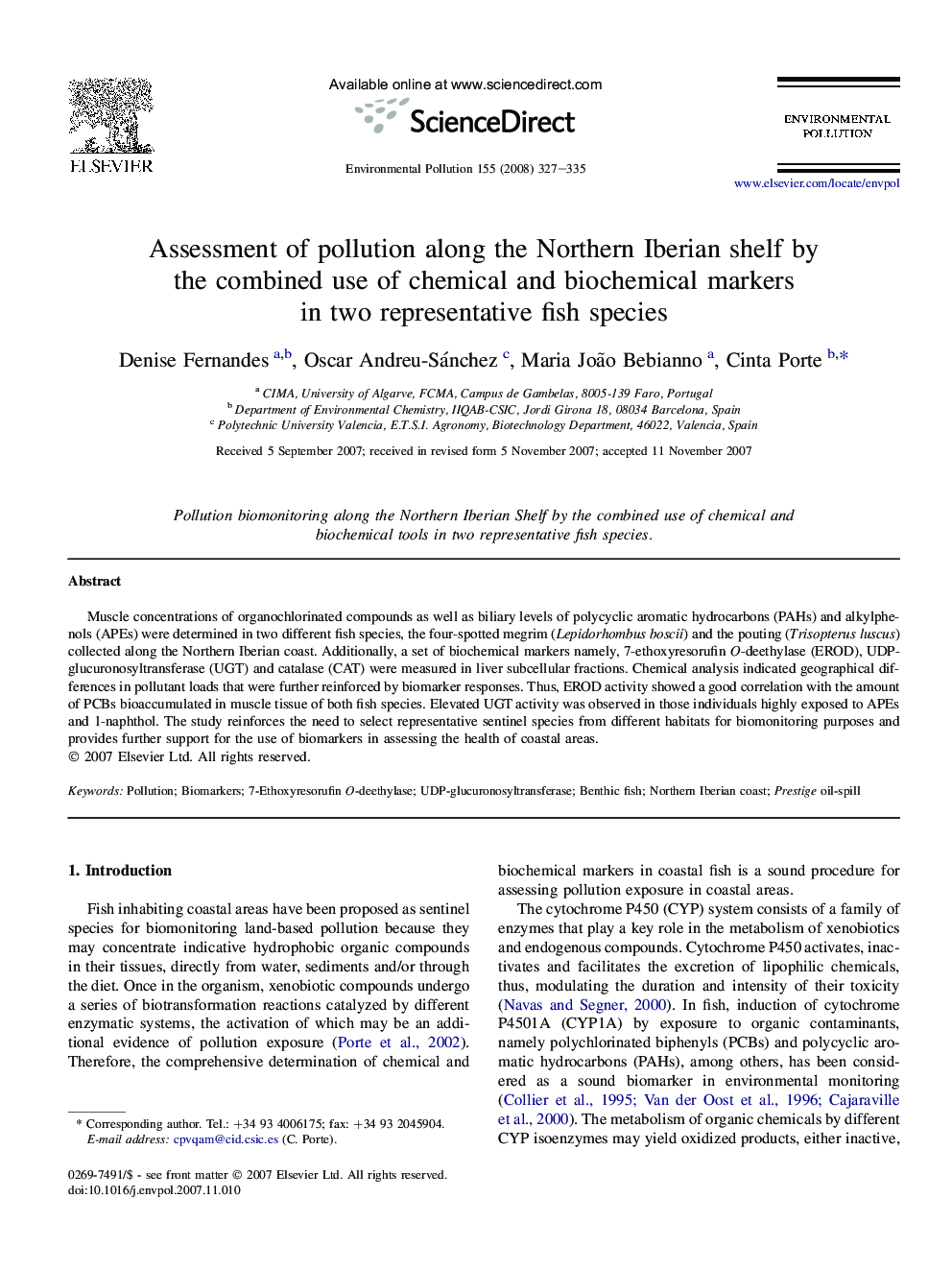| Article ID | Journal | Published Year | Pages | File Type |
|---|---|---|---|---|
| 4426495 | Environmental Pollution | 2008 | 9 Pages |
Muscle concentrations of organochlorinated compounds as well as biliary levels of polycyclic aromatic hydrocarbons (PAHs) and alkylphenols (APEs) were determined in two different fish species, the four-spotted megrim (Lepidorhombus boscii) and the pouting (Trisopterus luscus) collected along the Northern Iberian coast. Additionally, a set of biochemical markers namely, 7-ethoxyresorufin O-deethylase (EROD), UDP-glucuronosyltransferase (UGT) and catalase (CAT) were measured in liver subcellular fractions. Chemical analysis indicated geographical differences in pollutant loads that were further reinforced by biomarker responses. Thus, EROD activity showed a good correlation with the amount of PCBs bioaccumulated in muscle tissue of both fish species. Elevated UGT activity was observed in those individuals highly exposed to APEs and 1-naphthol. The study reinforces the need to select representative sentinel species from different habitats for biomonitoring purposes and provides further support for the use of biomarkers in assessing the health of coastal areas.
